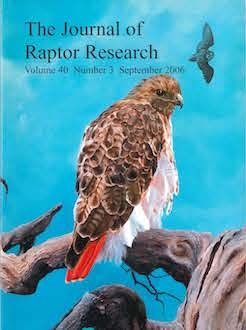We described urban/suburban Red-tailed Hawk (Buteo jamaicensis) nesting habitat and compared nesting habitat to unused habitat based on presence and absence of Red-tailed Hawks. We developed a landscape-scale logistic model of nesting habitat occupancy, then applied it to other locations to determine whether unoccupied patches of Red-tailed Hawk nesting habitat existed in urban locations. Red-tailed Hawk nesting habitat in urban/suburban Milwaukee usually included large areas of grassland and other herbaceous cover types. Urban/suburban Red-tailed Hawk nesting habitat was comprised of more than three times as much grasslands and woodlands, and had greater land-cover diversity and patch richness than unused habitat. Characteristics of unused habitat indicated that Red-tailed Hawks avoided areas of heaviest urbanization, perhaps because of insufficient hunting habitat. The logistic regression model developed from our data demonstrated that suitable, unoccupied nesting habitat existed in this urban area. As the Red-tailed Hawk population expanded into urban locations in this study area, the birds apparently were adjusting well to urbanization. Additional studies of urban raptor populations may provide valuable insight into future management considerations for wildlife in human-influenced landscapes.
How to translate text using browser tools
1 September 2006
LANDSCAPE FEATURES OF RED-TAILED HAWK NESTING HABITAT IN AN URBAN/SUBURBAN ENVIRONMENT
William E. Stout,
Stanley A. Temple,
John R. Cary

Journal of Raptor Research
Vol. 40 • No. 3
September 2006
Vol. 40 • No. 3
September 2006
Buteo jamaicensis
human-influenced landscapes
land-use planning
red-tailed hawk
urban/suburban habitat




